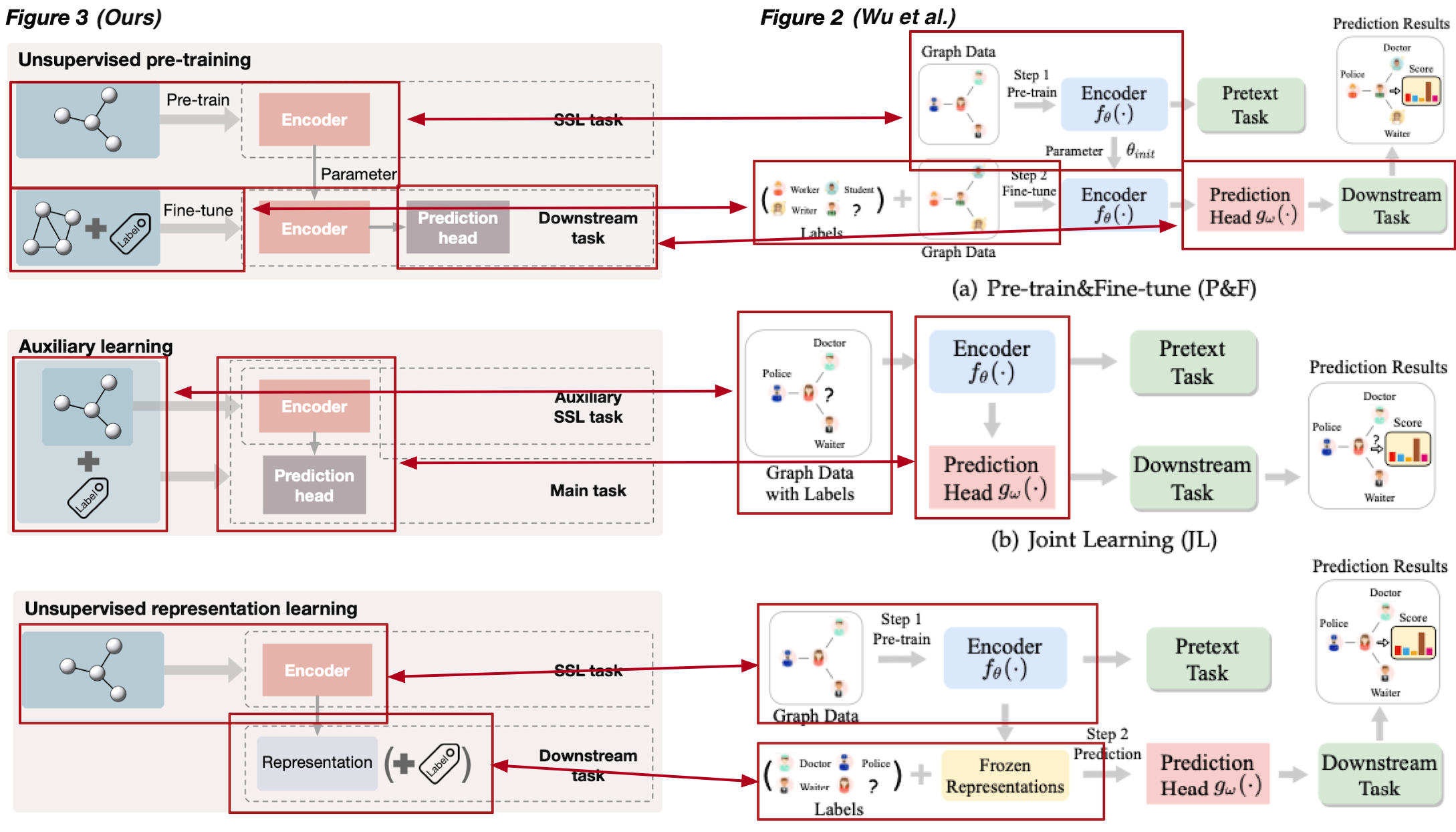Update: We have reported our case to the TKDE and IEEE publication board. The case is now under their investigation. We will not make any further public comments before the investigation is done.
It was recently brought to our awareness that a survey paper Self-supervised Learning on Graphs: Contrastive, Generative,or Predictive by Lirong Wu et al., published in IEEE Transactions on Knowledge and Data Engineering, shares a very high similarity to our paper Self-supervised learning of graph neural networks: A unified review published in IEEE Transactions on Pattern Analysis and Machine Intelligence.
Although it is very possible that two survey papers on a same topic can share some similar formulations and method descriptions, we are surprised that our method taxonomy, paper organizations/storylines, figures, unified frameworks, and many other unique insights to the topic also appear in their paper. Given the similarity in many individual dimensions of the two papers, we believe that the likelihood that the two papers are from a joint distribution is significantly higher than that they are independently from mariginal distributions.
Below we summarize the timeline and provide a list of evidence about the similarity.
On Febuary 22, 2021, the first version of our review paper was made available on arXiv. Three months later, on May 16, 2021, the paper by Wu et al. became available on arXiv. After that, the paper by Wu et al. and our paper was published on December 1, 2021 and April 27, 2022, respectively.
We compare several similar elements in terms of text, figures, and finally paper structures in the following figures.
Note that our equations (3)--(7), (23), (24), (27), (28) below, and our equations corresponding to their (12), (15), (20) are our original formulations and are not from any specific method paper.
-
Identical/similar statements and formulations. To the best of our knowledge, we are the first to summarize and formulate the taxonomy on paradigms of using SSL, which is not widely used before.

-
Identical/similar statements and formulations. To the best of our knowledge, we are the first to unify existing contrastive approaches, by identifying their connections among each other.

-
Identical/similar statements and formulations. To the best of our knowledge, we are the first to use these formulations to summarize and categorize augmentations for graphs.

-
Identical/similar statements and formulations. To the best of our knowledge, we are the first to use these formulations to summarize and categorize augmentations for graphs.

-
Identical/similar statements and formulations. To the best of our knowledge, we are the first to use these formulations to summarize and categorize augmentations for graphs.

-
Identical/similar statements. To the best of our knowledge, we are the first to consider projection heads from a parameterized MI estimator perspective of view.

-
Identical/similar statements and formulations. To the best of our knowledge, we are the first to summarize the equivalences or connections among contrastive objectives.

-
Identical/similar statements and formulations. To the best of our knowledge, we are the first to summarize the equivalences or connections among contrastive objectives.

My co-author and I spent hours working on multiple versions of the presentation and layout to ensure that it was clear and precise. The design of the figures should be non-trivial and the similarity its unlikely to be a coincidence.







